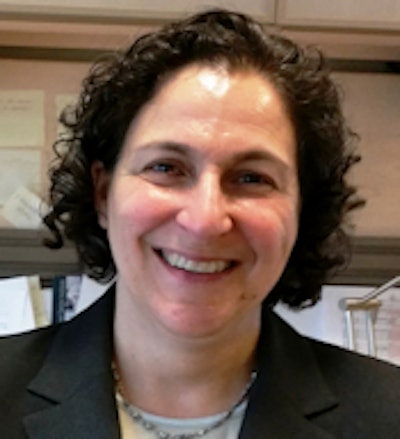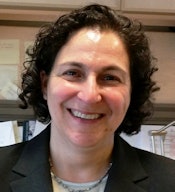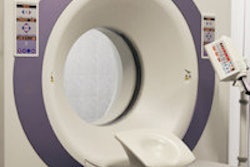
Participants in the massive National Lung Screening Trial (NLST) weren't troubled by false-positive initial results suggesting they might have cancer -- possibly because they had been well-prepared in advance for such alarms, according to a report published on July 25 in Cancer.
The study team from Brown University followed up on NLST participants at 16 centers across the U.S. to examine the psychological effects of lung cancer screening in the trial. Published in 2011, NLST compared low-dose CT (LDCT) and x-ray screening in more than 53,000 screening subjects; it showed that CT screening produced a minimum 20% mortality reduction, compared with chest x-ray or no screening. The results have helped propel CT lung screening toward possible widespread coverage in the U.S.
In the new analysis, more than one-third of the nearly 3,000 participants assessed had initial false-positive results, but their short- and long-term anxiety didn't exceed that of participants with negative screens. This wasn't what the study team was expecting, according to Dr. Ilana Gareen, lead author and assistant professor of epidemiology in Brown's School of Public Health.
"I was very surprised," Gareen told AuntMinnie.com. "When we originally planned the trial, we anticipated that at one month postscreen, participants would show reduced quality of life and increased anxiety if they had a false-positive screen. But we didn't find that. We found there was no difference between those who had a false-positive screen and those who had a negative screen."
The authors credit a carefully executed consent form for educating NLST screening subjects in advance and thereby keeping fears in check.
Tough row to hoe
Lung cancer is the leading cause of death in the U.S., claiming nearly 160,000 lives per year. Now that lung cancer screening has been shown to reduce mortality significantly, and lung cancer screening guidelines have been approved by several key players, including the U.S. Preventive Services Task Force (USPSTF), one of the most important remaining barriers to widespread screening is uncertainty about the potential psychological impact of a false-positive screen, the authors wrote (Cancer, July 25, 2014).
In contrast to other screening protocols that provide definitive results fairly quickly, lung cancer screening subjects who get a positive result often must wait from one to six months to be scanned again to verify that the lesion is still present and to see if it has grown. The watching and waiting is a reflection of both the invasiveness of lung biopsy and the low prevalence of actual cancer in suspicious CT findings. Lung cancer screening also delivers a high rate of significant incidental findings that aren't related to lung cancer but can result in additional diagnostic evaluations, the study team noted.
As a result, patients may go for long periods of time not knowing their lung cancer status. At the same time, false-positive breast cancer screens, for example, have been shown to significantly increase anxiety and reduce health-related quality of life (HRQoL).
Surveying NLST participants
Gareen's team surveyed 2,812 NLST participants for the study -- all participants had received a positive scan and had completed an HRQoL test. Because 6% to 10% of participants were testing positive for a significant incidental finding, these individuals were invited to participate in the survey.
 Dr. Ilana Gareen from Brown University.
Dr. Ilana Gareen from Brown University.The global health status of participants was measured using a questionnaire that asks individuals to report general physical and mental health quality. The results were compiled into two summary measures, a Physical Component Score (PCS) and a Mental Component Score (MCS), the authors explained. Anxiety was measured using the State-Trait Anxiety Inventory.
After assessment, the researchers divided the subjects into groups based on their final diagnoses. A total of 63 individuals (2.2%) were true positives with a lung cancer diagnosis, 1,024 (36.4%) had false-positive results (cancer-free at one-year follow-up), 1,381 (49.1%) were true negatives, and an additional 344 participants had a significant incidental finding of a potential problem unrelated to lung cancer.
The participants assessed were similar in age distribution and smoking status to the rest of the NLST population, but they were more likely to be female, white, non-Hispanic, more educated, and unmarried, the study team wrote.
What, me worry?
As might be expected, participants who were true-positive for cancer had lower quality-of-life scores and higher anxiety than participants with false-positive results, significant incidental findings, and negative screens, the authors reported. The association held up over both the short and long term.
However, the quality-of-life scores of participants with false-positive diagnoses remained similar to the scores of those who were given true-negative diagnoses, according to the authors. When the results were adjusted for the educational level of the participants, no differences were found.
The authors cautioned that the false-positive group was heterogeneous, making it hard to generalize the results. Some might receive a final diagnosis very quickly, while others without clearly defined nodules would likely have had to wait longer, they noted. In addition, precise dates of diagnosis were often lacking.
"These results provide evidence that in a screening program that includes counseling and advises participants of the high likelihood of a false-positive screen and additional testing, there may be no impact on HRQoL or anxiety for participants who are free of lung cancer," the authors wrote.
Well-crafted consent process is key
The NLST consent process provided a good model for advising people undergoing screening, the authors noted. Concurrent with this study was a qualitative study led by Elyse Park, PhD, one of Gareen's co-authors, who interviewed people regarding their perceptions of lung cancer risk. In those interviews, Park found that participants understood the process of screening and the high risk of a false-positive result very well, Gareen said.
"We believe that the [NLST] consent form was well-constructed and that it advised the participants that there was a high risk of a false positive, and even if they had a false-positive finding and needed additional testing, the likelihood that they had lung cancer was quite low," Gareen said. "I was very impressed that the participants understood how difficult screening was."
In preparing for NLST, Dr. Denise Aberle and Dr. William Black "did a terrific job in constructing a consent form that I think is the reason for our findings," Gareen said. And, importantly, radiology assistants were onsite to explain the consent form to NLST participants, she said.
The findings "provide evidence that in a large screening program in which participants received extensive counseling as part of the consent process, screening was not associated with high psychological costs for participants who screened positive but were free of lung cancer," the authors concluded.
Screening viable despite false positives
The results of this study should encourage doctors to recommend appropriate screening, so long as patients are properly informed of the likelihood of receiving a positive result and its implications, Gareen and colleagues wrote.
It also means that "those who are setting up these pop-up screening centers need to be aware of the entire screening process," Gareen said. "And I think that evidence from mammography, where you do see increased anxiety post-test in those with false positives, is instructive in lung cancer screening."
Going forward, the group will look at whether providing information on the high rate of false positives and the probability of additional follow-up makes a difference in quality of life, Gareen said. Separate papers by the authors will also address other aspects of screening, including healthcare utilization and costs associated with different screening results.
"In terms of this paper, we want to look at the impact of counseling on adherence to future screening -- are people who are well-counseled and expecting certain results going to come back for their second and third screens?" Gareen said.




















